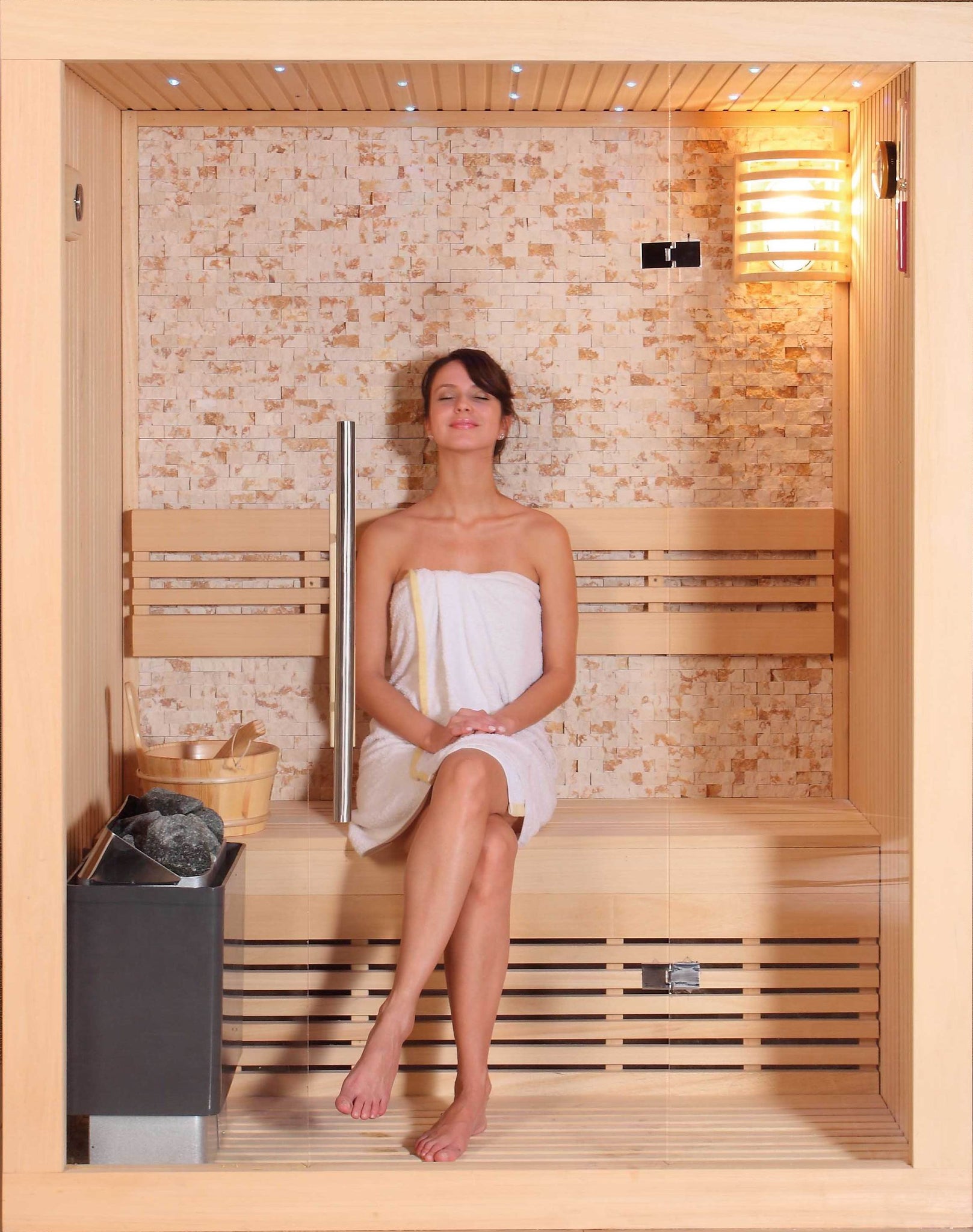Not known Facts About Traditional Sauna
Not known Facts About Traditional Sauna
Blog Article
Excitement About Traditional Sauna
Table of ContentsThe Best Strategy To Use For Traditional SaunaIndicators on Traditional Sauna You Need To KnowThe Greatest Guide To Traditional SaunaWhat Does Traditional Sauna Mean?
Many of the weight shed in a sauna is water loss and is re-gained upon rehydrating. Without a doubt sauna can be a crucial part of a healthy weight loss program. To check out the distinctions in between traditional and IR saunas, I will certainly divide these into proven, academic, and made differences.Thus, the hottest point in the saunawhich is at the ceiling directly over the sauna heateris typically between 185 and 190 F. Traditional Sauna. Claims that a standard sauna surpasses 200 F is simply not real and not appropriate for electrical saunas marketed in the US. The temperature for a far-infrared sauna is typically set in between 120 and 140 F; nonetheless, unlike the standard sauna, the objective in and IR space is not to achieve a heat
As a result of this, the temperature distinction is nearly unnecessary, since excessive sweating causes both sauna types, but the approach of heating up the body is various. In an IR sauna the bather will certainly feel warm and will sweat profusely, but at much lower temperatures. Thus, if the goal is to invest longer periods of time in the sauna, the IR sauna is a good choice.

Traditional Sauna - The Facts
When the high temperature is accomplished, the elements cycle on and off to preserve the heat. Many typical sauna individuals take pleasure in pouring water over the rocks to produce vapor to raise sauna moisture levels. The benefits of putting water over the rocks consist of: making the space a lot more comfy, moistening the nasal passages, and enabling the usage of aromatherapy by mixing important oils with the water.
In a far-infrared sauna, the heat waves permeate the body to properly heat the body and increase the body core temperature level. To attain this raised temperature level, Far-infrared emitters create infrared energy which is close to the very same wavelength as that which the body naturally emitsoften described as the "Vital Array" of 7 to 14 microns), so the energy is well obtained by the body.
When the energy page enters the body, it triggers the body temperature level to enhance and ultimately leads to sweating. In an infrared sauna it's crucial for the emitters/heaters to continue to be on practically frequently. Because there is no mass of rocks to retain heat, the sauna will certainly cool if the emitters turned off.
As mentioned above, the sauna bather in an infrared room wants to position himself in front of operating emitters to get maximum take advantage of the warmth. The heating time for both spaces can be very different, depending upon how the rooms are made use of. For a conventional sauna, a bather should allow 30-40 minutes for the area to accomplish a wanted temperature level and to correctly pre-heat the rocks.
Fascination About Traditional Sauna
A well constructed sauna will generally accomplish a temperature level of 150-160 F in about 30-40 minutes. For hotter temperature levels, the area might require to heat for a longer period.
To some, 15 mins was "thrown away" while the infrared energy heated the timber panels instead of heating up a body, while others discover a pre-heated space to be a lot more comfy and think an elevated starting temperature level is needed to start perspiring. The length of recommended use useful reference for every space is approximately the same (10-15 mins per session); however, due to the reduced air temperatures and the capability to really feel the results of infrared heat much faster than a typical sauna, it is not unusual for an individual to invest a total of 20-30 minutes in an infrared sauna.
Conventional saunas often tend to be bigger (hence utilize more electrical power) than infrared saunas, although traditional saunas are certainly offered in one and two person dimensions. For a two-person conventional sauna, 5x6 or 5x7 size is most prominent. The leading bench can easily seat two or three people and is also enough time to rest during the sauna session.


The average expense per kWH of electrical energy in the united state is about $0.11, so a 4.5 kW heater will certainly cost roughly $.50 to compete one hour, if the heating unit runs continually for one hour. Commonly a sauna heating system will certainly run for 75% of the very first hour and 50% of subsequent hours on considering that the aspects cycle once the established temperature is accomplished.
The Best Strategy To Use For Traditional Sauna
A 2 person far-infrared area is generally literally smaller sized than a traditional sauna, typically concerning 4' x 4' or smaller sized. The IR heating system is usually 1.5-1.7 kW utilizing a 120 volt 15 amp plug-in service. Considering that the area can be used earlier than a sauna space, we will certainly presume the space is used for to of an hour consisting of warmth up time.
Lastly, there is a rarely discussed difference in the social experience in between the 2 areas. While our society has actually shed some of the social benefit of the conventional sauna experience, go to this web-site it can be very socially satisfying. From household time in the sauna, to heart-felt discussions with loved ones, to sauna partiesthe typical sauna experience can cause intimate socializing.
Many higher end infrared spaces include colored light treatment, noise systems and full-glass fronts.
Report this page